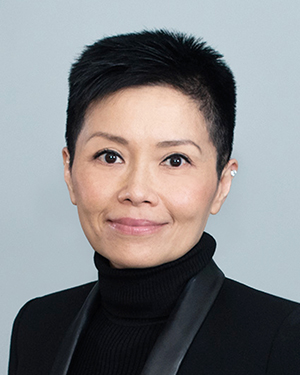Cottonwood Group recently launched an open-ended, multi-strategy real estate investment vehicle called the Cottonwood Founders Portfolio Fund. The Los Angeles-based firm, which also has offices in Boston and New York, named the fund after its strong base of anchor legacy investors.
Cottonwood’s long-standing, loyal investors not only supported the new fund, they requested this investment vehicle. Moreover, they’ve already committed $200 million to the fund, which has an overall target of more than $750 million and is the first that Cottonwood has raised in its nine-year history. Previously, the group focused exclusively on club deals.
In addition to the Founders Fund, the firm has $3 billion in asset under management (AUM). Late last year, it established a $200-million investment platform with BCEG International Investment—US, the investment arm of Beijing Construction Engineering Group.
Historically, Cottonwood has focused on larger-scale transactions in the $100 million to $500 million range. Its largest project to date was the investment and development of the $1 billion EchelonSeaport mixed-used project in Boston.
WMRE spoke with Tinchuck Ng, managing director and head of investments with Cottonwood Management LLC, about the new fund, how Cottonwood raises money and its relationship with its investors. Prior to joining the Cottonwood team, Tinchuck founded Athena International Capital, a Hong Kong-based targeted investment advisory firm focused on assisting cross-border investors and emerging operators on large scale international real estate transactions, product development and capital formation. Over the course of her career, Tinchuck has managed more than $1.7 billion in cross-border capital and completed over 100 real estate transactions totaling more than $2.3 billion in the U.S., Europe and China.
This Q&A has been edited for length, style and clarity.
WMRE: What type of investors does Cottonwood target for the Founders Fund?
 Tinchuck Ng: We have quite a lot of cross-border investors from Asia, including institutional, family office, conglomerates and ultra-high-net-worth individuals. On the U.S. side, we target family offices and ultra-high-net-worth individuals, as well as traditional institutional capital.
Tinchuck Ng: We have quite a lot of cross-border investors from Asia, including institutional, family office, conglomerates and ultra-high-net-worth individuals. On the U.S. side, we target family offices and ultra-high-net-worth individuals, as well as traditional institutional capital.
WMRE: What are your investors’ main objectives in investing in the fund? What kinds of returns do they typically look for?
Tinchuck Ng: Unlike most targeted strategies, the fund has full flexibility to invest in any part of the capital stack and in multiple product types. For that reason, the fund maintains the ability to act nimbly in the dynamic U.S. real estate market and target the best risk-adjusted return component in any real estate transaction instead of being tied to a specific product type or component in a capital stack. This allows the fund to achieve its absolute return objective regardless of market condition, placing a priority on performance and overall success. The fund is targeting a current distribution of around 6 percent and a total return target in the mid-teens.
WMRE: Who are the anchor legacy investors that inspired the fund’s name?
Tinchuck Ng: They are investors whom we’ve been working with for a very long time, including a few very big Asian conglomerates. These investors, along with several cross-border investors that invest with us, have been nudging us to move to a fund format. The creation of this fund is an effort to satisfy their desire to deploy capital faster and at a greater scale.
WMRE: How did these investors express their preference for a fund structure? What did those conversations look like?
Tinchuck Ng: A lot of these investors have invested hundreds of millions of dollars with us. They appreciate that they can invest in different parts of the capital stack knowing that we have a team of in-house experts with diversified skillsets that allows us to immediately address any issues if they arise. That’s why they are comfortable entrusting us with more money. And because they understand how the U.S. investment market works, they know the type of execution that is needed to capture the best opportunities. They asked us what we needed from them to capitalize on these deals and to do it on a greater scale, and the answer was the fund.
WMRE: How does Cottonwood attract and find new investors?
Tinchuck Ng: Most of our new investor relationships are referral by existing investors and business partners. In general, we are introduced to new investors via email or phone, and then we typically follow up with further communication (phone/email/in person meeting); the format varies by the investors’ preference.
We are pretty targeted when bringing on new investors. We pursue a very similar profile that aligns with our investment strategy and interest. Historically, we have targeted ultra-high-net worth investors in Asia and family offices of Asian conglomerates, as well as traditional institutional capital in the region. We’re doing the same in the U.S.—targeting ultra-high-net worth investors and their family offices, as well as traditional U.S. institutional capital.
WMRE: Is there a point at which investment managers actually have too many investors and their funds are too big?
Tinchuck Ng: We’re very conscious of the fact that any fund, at some point, can have too many investors and too much capital to deploy. At a certain size, the investment manager is keener on pushing money out than capturing the best deals. This is top of mind for us, and we have specific checkpoints to make sure we are delivering for our investors through the most appropriate investment format and vehicle.
WMRE: How does the firm communicate and keep the conversation going with its existing investors to make sure they are on the same page regarding strategy, targeted returns and other investment specifics?
Tinchuck Ng: Historically, we haven’t worked with a capital raiser to just bring in investors. Instead, we’re relationship-driven, and when our investors place money with us, they do it on a very substantial scale. We spend a lot of time talking with our investors, keeping them up to date on their existing investments, but also letting them know when we see an opportunity of interest. We start flagging those opportunities for our investors, so they’re not caught by surprise when we formally present the transaction or do a capital call.
WMRE: Cottonwood will commit 10 percent of its own equity to this fund. Is that the usual amount you typically bring to the table?
Tinchuck Ng: Ten percent equity is the threshold that we commit to for the fund. We have done different amounts on club deals before, but it really depends on the transaction. Right now, we’re in negotiations for a couple of deals where we’d have the majority interest. We believe in our transactions, and if we need to write the check, we’re happy to do so, but it needs to come with the right level of control and return.
WMRE: When Cottonwood announced the fund, the firm said it would pursue “high potential” deals. What does that mean exactly? What types of investments will you pursue?
Tinchuck Ng: We have always been focused on gateway cities, including Los Angeles, San Francisco, and Seattle on the West Coast, and Boston and New York on the East Coast. With the new fund, we are still going to be gateway city focused, but we’re also looking at some growth markets as well.
What is different about us is that we will say no to markets if we don’t have access to operating capabilities there. For example, we’re not at all afraid of development risk, and we’re very comfortable with for-sale residential in New England and New York because we have strong teams there.
We’re seeing interesting distressed opportunities on the hotel side, as well as opportunities in value-add office and logistics. Our strength continues to be large scale, mixed-use with strong residential component, either for sale or rental. We’re very keen on the multifamily sector and that has to do with the fact that we have in-house operating capabilities.
Also, we’re flexible with debt and equity. The benefit of being capital stack-agnostic is that we have flexibility to adjust to the needs of the transaction and the partner. It is not uncommon for us to start the relationship with a new partner through a loan and test the waters before moving into an equity relationship.
WMRE: How much appetite for risk do you feel your investors have right now?
Tinchuck Ng: Super high-net-worth investors in both the U.S. and Asia have a higher level of flexibility and are more comfortable with risk because they’re investing their own money instead of someone else’s. A lot of them have owned significant real estate holdings or have been developers before, which gives them a higher tolerance for perceived risk because they’ve had exposure to real estate operations, and they know how to price real estate risk.
WMRE: As we gradually move from the depths of the pandemic to reopening in the U.S., what have been the biggest challenges you’ve faced in terms of fundraising and sourcing deals?
Tinchuck Ng: Fundraising hasn’t been too challenging for us. During the pandemic, the appetite from Asian investors remained largely the same and stayed relatively consistent across the board, from family offices to institutions. That wasn’t the case for U.S. investors, particularly institutions. They have been very cautious during COVID, and if we were solely reliant on them, it was challenging to get their attention. But starting about three to four months ago, U.S. investors did a 180-degree turn. They’re ready to put money out.
The bigger perceived challenge was the sourcing side of distressed transaction during COVID. A lot of our investors were expecting more distressed real estate in the U.S. and thought there would be significant opportunity there. As a citizen, I’m happy we didn’t see the level of distress everyone expected. But as an investment manager, it has been a bit of a challenge to identify distressed transactions in our focused sectors—namely, multifamily and logistics.
WMRE: Can you point to the most significant and meaningful differences between American and Asian investors?
Tinchuck Ng: I think, generally speaking, there are more similarities than differences. One area where there is some variation is Asian ultra-high-net-worth [investors] tend to have a larger allocation towards real estate and real estate development. Also, for most of our Asian investors, we’re dealing directly with the family patriarch, and they are often investing in terms of generational wealth. Collectively these factors influence the flexibility that they offer us in a transaction.
And finally, in Asia, you don’t see a lot of distress or a whole lot of major discounts on real estate transactions. The gearing tends to be low with Asian investors. They’ve seen hard times, and they’ve learned how to ride through waves by staying low in leverage and being disciplined in cash flow management. They know that if the market corrects, Cottonwood has been very disciplined with leverage, and we’ve built in safety mechanisms, such as different form of reserves in transactions. Having that discipline has brought our investors a lot of comfort.

